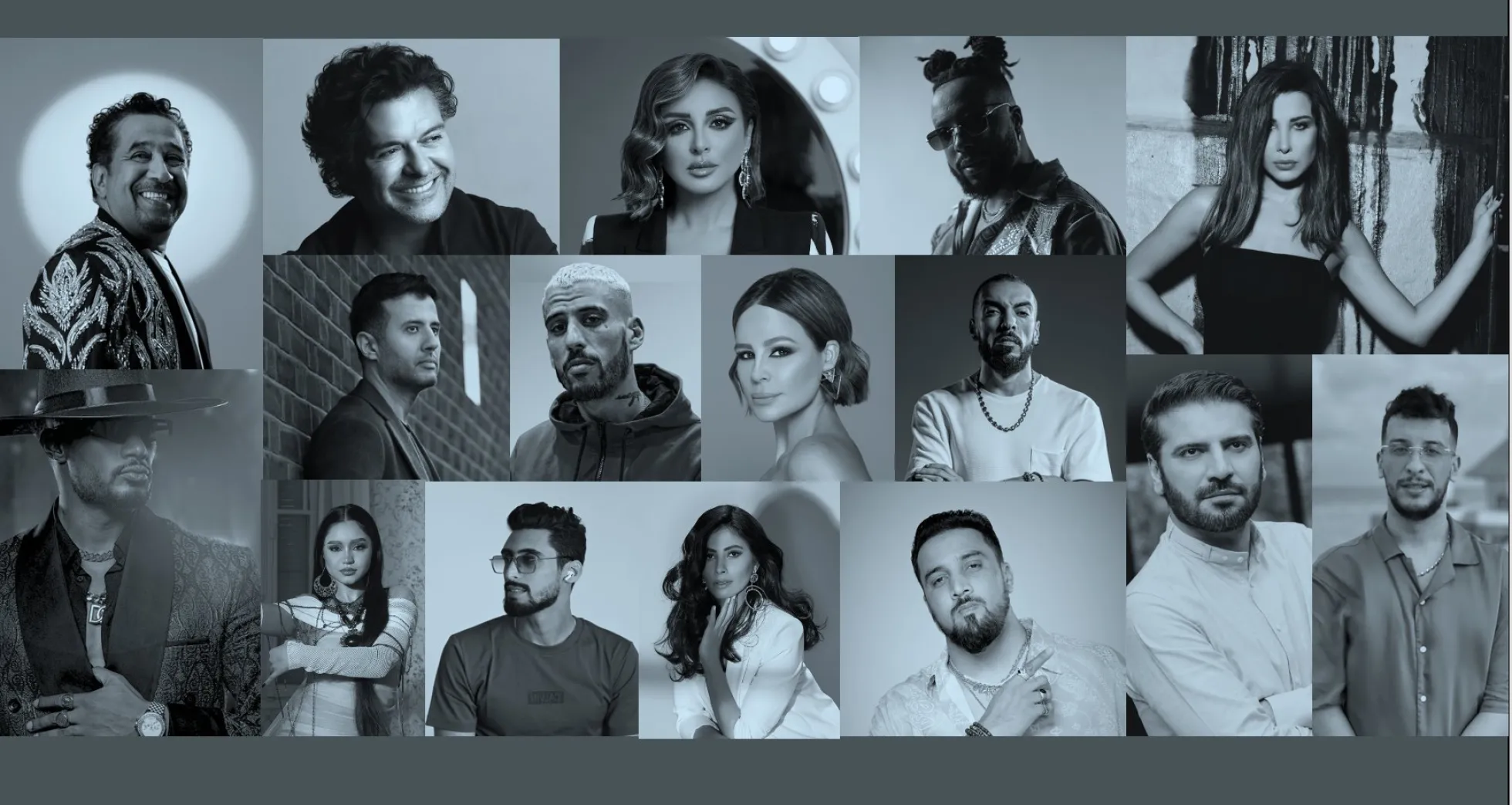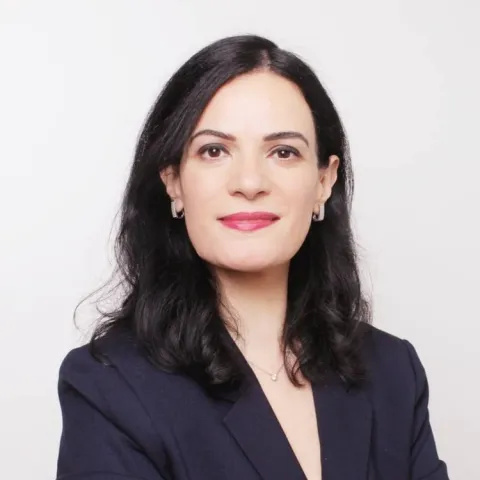
Unleashing the power of local potential: Dolly Makhoul on MENA's music market diversity, richness and dynamism

Dolly Makhoul is MENA director at Believe and works across a large number of countries in the region, all of which have important distinctions as well as very different consumption habits and digital adoption speeds, driven in part by geography and culture as well as by economics.
As you may already know, MENA stands for Middle East and North Africa. But the number of countries included in the definition of MENA can vary depending on the reader's criteria. One common definition is to include in MENA those countries in which Arabic is primarily the common official language. This is the definition Believe uses to operate in the region.
In this case, the list includes 23 countries: Algeria, Bahrain, Chad, Comoros, Djibouti, Egypt, Iraq, Jordan, Kuwait, Lebanon, Libya, Mauritania, Morocco, Oman, Palestine, Qatar, Saudi Arabia, Somalia, Sudan, Syria, Tunisia, United Arab Emirates and Yemen.
Combined, these countries have a population of 396 million and the average GDP per capita is $6,680.43. Internet penetration in the Middle East in 2019 stood at 67.2%, but when the Middle East and North Africa are combined, that drops to 33.2%. 4G penetration across the region stands at under 20%.
"Despite the fact that the Arabic Language is a determining factor unifying these countries, the whole region remains diversified and heterogeneous at multiple levels. This diversity is best illustrated by the many dialects spoken in the different sub-regions and nations, with some dialects even coexisting in the same country.
Dialects are radically divergent, each influenced by diverse historic cultures of its home country, to the extent that the dialects of Western Arab countries – such as Morocco, Algeria and Tunisia – cannot be easily understood by the Eastern Arab countries, of the Levant (Iraq, Syria, Lebanon) or the Gulf Cooperation Council countries, for example.
Culture and traditions differ from one country to another. That impacts on the music, how we produce it and how we consume it across the territories."
Music is a common language for many people in MENA and successful musical acts and recordings can help spread understanding of their particular dialects across the region. Music is proving itself as an important vector for the transmission and for the understanding of different dialects across the region.
"In the past century, the recordings of the legendaries Oum Koulthoum, Mohammad Abdel Wahab and Abdel Halim Hafez have been key in helping to spread the Egyptian dialect across the Arab community. The same goes for the recordings of the Lebanese artists Feyrouz & Rahbani Brothers, which allowed other regions to become acquainted with the Lebanese dialect.
A dynamic that is still going on, with new artists, new musical genres and various local hit songs spreading throughout the region, with artists acting as ambassadors for the dialect of their native country."
MENA has distinct hubs for music production and music consumption, with some countries over-indexing in how much music they create and how that impacts across the region, with other countries over-indexing in terms of consumption volume and revenues generated.
The region needs to be approached and understood from different perspectives, with each country’s contribution to the whole being characteristically different.
The majority of streaming across the region comes from free consumption (around 65%), but a high concentration of paying subscribers in a handful of countries means that the lion’s share (around 90%) of total digital revenue comes from premium subscriptions.
The region is in the fascinating position whereby a third of streaming accounts for the vast majority of income. There are barriers to the adoption of subscription streaming (both technological and economic), but there is still enormous potential for subscription numbers to keep rising.
"Adoption for subscriptions across MENA as a whole is still less than 0.7%.
In the Gulf countries, we have the highest level of adoption for music subscription across various platforms with one leading international DSP.
In Egypt, the leader is a local platform. The consumption of music in Egypt is heavily local. Consumers are therefore looking for more local editorial-led experiences.
In the Levant, it’s still too low to count. All the key platforms are available but have low adoption. The local economic and political situation there is not facilitating the adoption of paid streaming.
The Maghreb is mainly a French-influenced territory. One local and one international DSPs are currently sharing the market. There are many obstacles for international DSPs operating in some markets, mainly due to local infrastructure in terms of copyrighting and music publishing, which does not really exist in these countries. This is delaying the arrival of some platforms in the region."
According to IFPI data, 95.3% of recorded music revenue in MENA in 2021 came from streaming. The region has effectively jumped straight from a pirate market to a digital market.
"Mobile operators are now trying to develop their own mobile streaming services, like Etisalat (Twist Music) and Vodafone Music. Today streaming is the biggest source of revenue for the recording industry in the region.
As I said earlier, the total number of subscribers in the MENA region is still around 0.7%, so it can only grow and grow. We estimate that by 2030 the total revenue can be multiplied by a factor of 4.5 or 5. The potential is there; it can only increase. But there are lots of things to be done in order to get there. Lots of infrastructure work needs to happen first.
We have obstacles around payment methods in some countries. There is low penetration of credit cards so the platforms need to be innovative with payment gateways to get there.
Subscription adoption is very different from one country to another. In richer countries, we see the number of subscriptions accelerating in growth. In other territories, it is slower.
The platforms are passing by B2B deals with the operators in some countries, in others they are exploring different payment methods and are trying to adapt their offers, such as with family or student deals.
They are trying their best to see them move from freemium to premium use, but this is currently not within the reach of the whole population.
Freemium model remains a field of battle among some DSPs offering this consumption type. Spotify recently reimagined its free experience through a new offer rolled out in Egypt along with some other Asian and African countries."
There was a short-lived period where Western streaming services were heavily pushing exclusives, signing up particular acts or individual albums to keep them, for a certain number of weeks, as an exclusive. This was done as a way to quickly drive subscriber numbers up, but it quickly fell out of favor.
In MENA, however, exclusives continue on certain DSPs. This is entirely around local acts and catalogs, rather than international releases, but this is a content play that still has enormous sway in the region.
"YouTube and Apple Music were the first international platforms to establish their operations locally. The arrival of the other platforms really started in 2018 with Deezer, which recently closed its local offices following 4 years of operation, their local services deployment was followed very quickly by Spotify and YouTube Music. Some of them found themselves driven into a lengthy battle over exclusive licensing of local content, rather than focusing on being competitive in terms of editorial lines and product development offering the best user experience.
This strategy is sometimes pushed by the labels and sometimes by the DSPs. Exclusive licensing proposals can also sometimes be initiated by labels and artists. For example, we see very big artists granting exclusive licenses to exploit their self-produced content to a particular platform, and some catalogues are even completely acquired by platforms.
We are trying to push for original productions by platforms locally to answer their content differentiation objective avoiding acquisition, in-line with their practices in mature territories. Unfortunately, this exclusive licensing and acquisition issue is proving an obstacle in the acceleration of the market, deceiving the users feeling lost as unable to find an exhaustive catalog, both local and international in one single platform."
Believe is taking its local vision to the region, understanding the importance of each country and how strategies there have to be localized. Believe is the only international digital music player with a physical presence in multiple territories in MENA. This enables it to tailor its activities for the different needs and potential of each market.
The company is also heavily focused on outreach and education programs so that local musicians and labels are able to effectively operate and compete in their home markets and across the region, all in line with its core values of expertise but also respect, transparency and fairness.
"Today we are present in Egypt, Lebanon, Tunisia, Morocco and Algeria – and are frequently travelling to the GCC markets. Through our local presence, we have developed segmented expertise by territory, by genre and by different levels of development for the artists and labels.
We can accompany the labels and the artists at the different stages of their career development with our experts and experienced digital music teams who are physically present on the ground with a strong knowledge of the local ecosystem. They are able to communicate with labels and producers in local dialects best accompany them.
We also have a strong education mission. We are running masterclasses and sessions from strategy to implementation in the release journey. We are pioneering at this level.
We are also trying to grow the emerging genres in the markets, not just the existing and established ones. We have good market share in both existing genres and new ones in every country.
This is a critical role that we are playing because these new genres can sometimes be controversial, in certain territories. We are keen to be present for the artists, helping them within these very distinct circumstances while maintaining a very respectful position towards local culture and traditions."
New genres are emerging across the region and they are also having both cultural and political impact. The role music played in the Arab Spring uprisings was significant and its repercussions are still being felt and still shaping the music that is capturing the public’s imagination.
"Music helped spark the Arab Spring revolution, first in Tunisia and then in Egypt. Since then it’s galvanized other countries towards revolution. In Tunisia, we saw that Tunisian rappers helped hip-hop to become the soundtrack of the revolution, mainly with the rapper El General whose song “Rais”, which criticized the local government, became the anthem song interpreted also in Egypt, Bahrain and other countries.
Revolutionary and political hip-hop artists faced government persecution and criminalization, but they grew in popularity and prestige after the revolution. Now this genre is mainstream in Tunisia.
Post-revolution, we saw that digital music continues to be the safest and the most effective form of resistance.
The establishment of these new genres has accelerated the rise of other urban genres in other territories. Those recordings are topping the local charts today.
For example, the mahraganat in Egypt is music that blends R&B, rap and techno. It is derived from the streets of Cairo and is spreading through the class system. Today it is heard by middle-class people, at wedding parties and even at nationalist events. It is a controversial music but one of the most-streamed genres in Egypt today.
In Algeria, we have what we call the zenqaoui music. It’s a type of urban music popular among young people. It borrows from raï, chaabi and the protest songs of football supporters.
These new genres were driven by the revolution, but they are continuing after the revolution."
Geopolitics have triggered a significant displacement of the population across the Middle East. Between 2010 and 2019, an average of 3 million people a year were migrating from the Middle East. This was either locally (i.e. displacement within the region) or from outside the region. But by 2020 and 2021, this number increased to 16 million per year.
As people move across the region, they bring their local music with them. This is having profound implications for not just what music is being listened to but also how that music is being monetized.
"These displaced people, either in MENA or outside MENA, drove a reactivation of some catalogs of popular and folkloric music coming from this area. It’s both a form of nostalgia for the Arab countries and a motivation for resilience around the hope of coming back home. We started seeing a growth in consumption of these catalogs.
We are also seeing a higher revenue rate for this consumption now that music is being streamed from countries with a revenue per stream that is higher than the local countries. That is because this diaspora are coming from North America, South America, Northern Europe or Australia."
The GCC are the oil-rich countries within MENA and, through economic opportunities, are attracting millions of immigrants, either from the Middle East or from Europe and Asia. The growth here is impacting music consumption patterns and trends.
"Active new hotel construction parties in these countries were interested in new genres for their in-house venues and clubs so they started establishing record labels for electronic music. They are financing talents to come from abroad, either experts in the business or DJs from all around the world. They are recording music exclusively for their clubs and venues.
Believe with its solid global expertise in electronic genre support, has been a pioneer in accompanying these labels and helping them to promote their music, both locally and internationally, as well as to facilitate close collaboration between these international artists and local artists. That is seeing the rise of electronic and dance genres.
Both the geopolitics of the region and the impact of Covid shifted a lot of talent from Levant and Egypt towards the Emirates and Saudi Arabia.
The Emirates in the past couple of years were offering golden visas for key actors in the music industry, including the top artists from the Levant and Egypt, to continue their career and to develop their career there.
During the “Expo 2020” World Expo in Dubai, lots of live events were organized presenting various genres, gathering people from all around the world. Abu Dhabi was named City Of Music in 2021 by UNESCO Creative City Network and they held as well numerous live events.
In Saudi Arabia, the service scene is booming and that is down to the democratization of music. We’ve seen a lot of festivals happening, and they are helping artists make up for some of the lost sources of revenue that they had missed, especially due to Covid. MDL Beast events have been great examples in the past couple of years."
Export and education are two important forces in the region currently. There are still limited opportunities for local music to be exported internationally, but this is changing. On top of this, education is a priority for Believe to help widen the potential of local labels and acts and, in so doing, increase the opportunities that can be opened up for them at home, across the region and internationally.
"Unfortunately, what we currently see is that exported music is consumed by the local communities that are present in the hosting countries. For example, Moroccan music and Moroccan rap is mostly consumed by the North African communities that are present in France and French-speaking territories. The top Middle Eastern artists are highly streamed in North America, South America and Australia; but they are streamed by the displaced people that are present in these regions.
We are confident that the next most-streamed artists in the world will come from these emerging territories, such as those in MENA.
We are seeing that a lot of international artists want to penetrate this market. So they are looking at collaborations with some local artists to make themselves more present here. This is also helping to accelerate the fame and the export potential of local artists in other territories.
We are very active at the education level in MENA. We have developed a program called #BelieveTheExperts to drive this.
Every two weeks we hold a session, either internally or with external guests, to speak about market information and knowledge, outlining the best practices to accompany the artists and labels in each country. It is tailored for each artist’s current level of development and for each label’s current level of development.
We bring in guests from the DSPs to outline their offerings, programs and activations per territory and per genre so that our staff members are always up to date with how they can best support artists and labels.
Our conferences are held either physically or online and are adapted to all local dialects."
Ramadan is a key period for Muslims, with an entire month devoted to fasting, prayer, reflection and community. During this period, the shape of music production and music consumption in Muslim countries completely changes and this significantly affects how the music business operates both during and after Ramadan.
"Ramadan is a period where we have less consumption and less production – but mainly for pop music. On the other hand, we see increasing consumption for religious music during this period. In Eid al-Fitr, after Ramadan, we have the highest volume of new releases coming in just three days.
More than 65% of consumption comes from freemium users. During Ramadan, even the revenue per stream decreases on the freemium services. That is because advertising agencies and brands are investing less and less during Ramadan. However, they are shifting their budgets to drama and TV series in this period.
Drama series during Ramadan are the most important entertainment activities. The production houses of these drama series invest a lot in music production for their series and their original soundtracks for which they are hosting top artists. The recordings from the series become the highest charting recordings, either during Ramadan or during Eid al-Fitr.
Believe has been a pioneer in developing many partnerships for these drama production houses so that we can distribute their music content outside of the TV universe on all streaming platforms.
It is not only during Ramadan. Religious occasions are very important for music consumption throughout the year in this region. During Christmas we also have higher consumption for Christian music and we also have higher investment in terms of brand advertising, which also increases the revenue per stream."

Regional Director for the Middle East & North Africa at Believe, Dolly Makhoul has been leading the Label & Artist solutions and Artist Services activities in the region since 2014.
A graduate of various masters in Science and History of Religions, Dolly Makhoul has always been interested in the cultural scene, which drove her to a career shift into the cultural products business in 2004 at Virgin Megastores, where she managed the chain's main branch in Beirut until 2008. She later spent six years in a 360° music company, perfecting her skills in artist management, production, live performance and branding.






